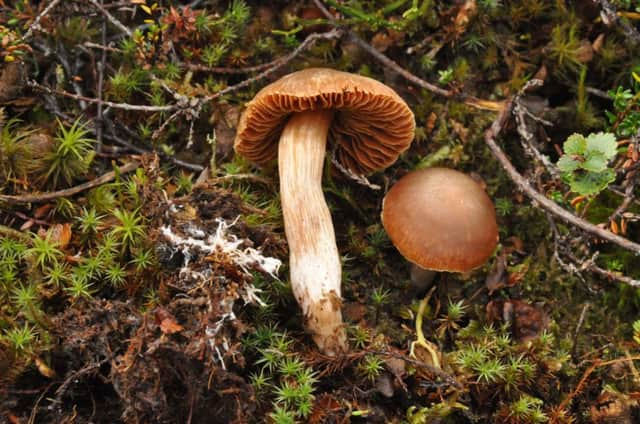Scottish peaks hiding unknown mushrooms species


Mycologists have collected an astonishing number of previously unknown fungi on peaks across the country, hinting that Scotland’s hills may be a haven for many more undiscovered species. Of nearly 300 different species found, 28 are unique and 34 never before found in the UK.
But Dr Andy Taylor, a fungi specialist from the James Hutton Institute (JHI), is warning that this bounty is in imminent danger of vanishing before it can be properly studied. “We’ve found species new to Scotland, new to the UK and species that are undescribed so they’re new to science,” he said. “Fungi in general are under-recorded, but what amazed us was the number of undescribed species.
Advertisement
Hide AdAdvertisement
Hide Ad“We’ve got, minimum, 28 new species. It’s just crazy as this is only from 23 sites, and if you consider the hundreds of potential sites in Scotland it’s staggering.
“There’s this hidden diversity that nobody knows about.”
Taylor and his team focused on a particular group of fungi that grow on the roots of native mountain shrubs, many of which are under threat.
“The plants and fungi are mutually dependent, with the fungi taking up nutrients from the soil and passing them on to the plants in return for sugars,” he said. “Without the fungi, the plants don’t survive and vice versa – they’re mutually dependent.
His colleague Andrea Britton, an ecologist at JHI, has for several years been studying long-term changes in Scotland’s alpine vegetation.
Her research has shown significant changes in mountain plants, with marked declines in the overall diversity of species over the past 30 to 50 years. She found there has been a surge in widely occurring varieties, spreading from lower areas, while specialist upland shrubs have been disappearing at an alarming rate.
These changes are believed to be linked to climate change, with milder conditions allowing lowland species to colonise higher latitudes, or as a result of increased of nitrogen in the soil benefiting grasses and other generalists over slow-growing mountain shrubs such as dwarf birch, dwarf willow and alpine bearberry.
Now Taylor is planning further studies of the endemic mushrooms and their host plants, which he believes could answer some of the biggest questions about the evolution of Scotland’s natural environment in the past 12,000 years.
JHI student Emily Hesling collected many of the new mushrooms while completing her PhD.
Advertisement
Hide AdAdvertisement
Hide AdThe 28-year-old said: “It has been long assumed the most diverse communities of fungi in the country are found in lowland places like native Caledonian pinewoods, where carpets of fungi of all shapes and sizes can be seen at this time of year. We found that the communities of fungi found on the mountainsides growing with the plant bearberry were as diverse as, if not more diverse than, those in the Caledonian pinewoods.“